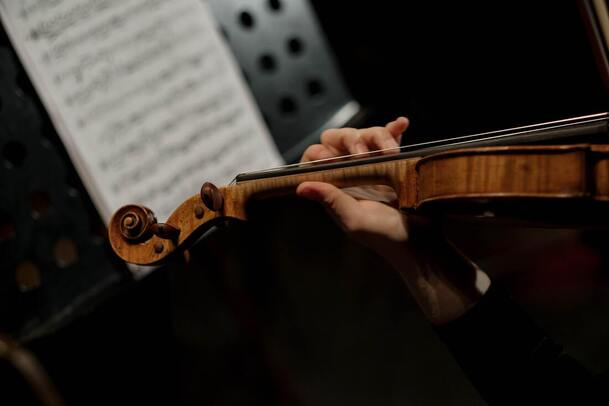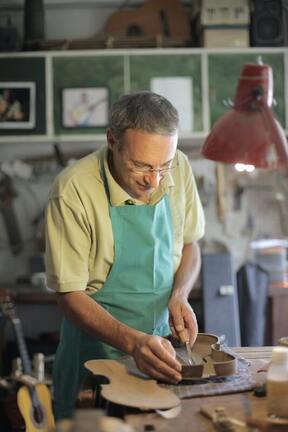Ten Things to Know About Learning the Violin
©JustViolin.org
|
|
No. 1 - The Violin, Viola, Cello, and Double Bass are all instruments of the violin family
String instruments or chordophones refer to all musical instruments that produce sound through the vibration of the string or strings stretched between two points. Orchestral string instrument is a more specific category of string instruments found in a western classical orchestra, namely the violin, viola, cello, double bass, and harp. The violin family also distinguishes itself from the viol family (viola da gamba) developed in the late 15th century.
Suggested reading:
Suggested reading:
No. 2 - There are fractional sized violins for children
Most adults play on full sized violins (4/4). The fractional sized violins come in 7/8, 3/4, 1/2, 1/4, 1/8, 1/16, and 1/32. It is advisable for children to play on the size of the violin that is suitable for them. The arm length should be longer than the length of the violin so that the elbow can bend comfortably when holding the violin. Otherwise, they should pick the smaller size.
No. 3 - The violin is a very fragile instrumentThe wooden pieces of the violin are glued together and the glue would melt under heat. Keep the instrument away from extreme temperature and humidity. Put it away securely in a violin case when it is not in use to prevent it from getting damaged by accident.
Suggested reading: Setting Up A New Violin No. 4 - The violin needs to be maintained regularlyFor optimum sound, the strings need to be replaced from time to time. Wipe the rosin dust off and keep the violin clean all the time. The tension of the bow hair should be loosen when it is not in use. Always check to see if the bridge has moved away from its original position and angle. Bring it to a luthier once in a while for regular maintenance.
Suggested reading: Setting Up a New Violin |
No. 5 - Understand and accept the learning curve
The violin is a difficult instrument to learn at the beginning stage. Compared to other instruments such as the piano, violin students take longer time to learn to make a decent sound and to play a simple tune. The actions involved in playing even a single note is much more complex on the violin. It is important for parents and students not to be discouraged by this.
Suggested reading:
Suggested reading:
- A Parent's Guide to Music Lessons, Examinations, and Competitions
- Learning the Violin (or Any Instrument) as a Child, Teenager, or Adult
No. 6 - The beginning lessons tend to focus a lot on the posture and movements, so you may not hear a lot of music yet
Having a good posture is extremely important in playing the violin, and this has to be developed right from a young age. In the future, it will be much easier for the students to learn if their foundation is strong, so be patient with it.
Suggested reading: Finding Balance and Ease in Violin Posture
Suggested reading: Finding Balance and Ease in Violin Posture
No. 7 - Intonation is a tricky stuff
Intonation refers to the accuracy of the pitches. All violinists including the professionals never stop working on their intonation. It is the most time consuming aspect of violin practice and it requires good technical and aural skills.
Suggested reading: Improve Your Violin Intonation
Suggested reading: Improve Your Violin Intonation
No. 8 - One of the main learning goals is to be able to produce a good tone
Good tone comes from unhindered vibration of the violin strings produced by relaxed and tension-free movements, which in turn comes from a good and balanced posture. Good intonation also help to enhance the tone of the violin.
Suggested reading: Playing the Violin With Beautiful Tone
Suggested reading: Playing the Violin With Beautiful Tone
No. 9 - Do not skip the technical exercises
We all love to play our favorite tunes, but that does not mean that we get to skip the tiresome technical works. Scales, arpeggios, etudes and studies are all very useful materials to build good technique.
Suggested reading: A Guide to Violin Etudes and Studies
Suggested reading: A Guide to Violin Etudes and Studies
No. 10 - Learn to practice mindfully
To improve your skill and to make meaningful progress, practice is essential. Knowing how to practice is even more important, it will help you to learn more efficiently. Practicing violin in a smarter way can also save you a lot of time and energy, making the entire experience more enjoyable!
Suggested reading: How to Practice Like a Professional Musician
Suggested reading: How to Practice Like a Professional Musician



